Related Research Articles

Laurent-Désiré Kabila usually known as Laurent Kabila, was a Congolese rebel and politician who served as the third president of the Democratic Republic of the Congo from 1997 until his assassination in 2001.

Lubumbashi is the second-largest city in the Democratic Republic of the Congo, located in the country's southeasternmost part, along the border with Zambia. The capital and principal city of the Haut-Katanga Province, Lubumbashi is the center of mining in the region, acting as a hub for many of the country's largest mining companies. No definite population figures are available, but the population of the city's urban area is estimated to be around 2,584,000 in 2021.

The culture of the Democratic Republic of the Congo is extremely varied, reflecting the great diversity and different customs which exist in the country. Congolese culture combines the influence of tradition to the region, but also combines influences from abroad which arrived during the era of colonization and continue to have a strong influence, without destroying the individuality of many tribal customs.

Chéri Samba or Samba wa Mbimba N’zingo Nuni Masi Ndo Mbasi is a Congolese painter from the Democratic Republic of Congo. He is one of the best known contemporary African artists, with his works being included in the collections of the Centre Georges Pompidou in Paris and the Museum of Modern Art in New York. A large number of his paintings are also found in The Contemporary African Art Collection (CAAC) of Jean Pigozzi. He has been invited to participate in the 2007 Venice Biennale. His paintings almost always include text in French and Lingala, commenting on life in Africa and the modern world. Samba lives in Kinshasa and Paris.

The mining industry of the Democratic Republic of the Congo produces copper, diamonds, tantalum, tin, gold, and more than 70% of global cobalt production. Minerals and petroleum are central to the DRC's economy, making up more than 95% of the value of its exports.
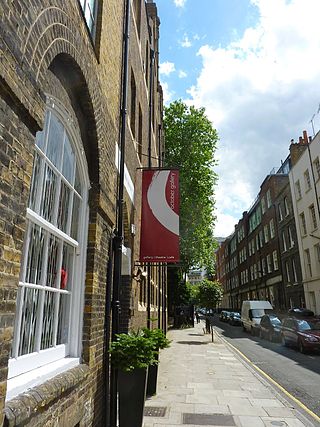
October Gallery is an art gallery in central London, England, established in 1979. It is notable for promoting the work of artists of the "Transvangarde" or trans-cultural avant-garde movement. The gallery also hosts talks, performances and seminars.
Joseph Makula (1929–2006) was a Congolese photographer. He initially served as a military photographer for the Force Publique before being hired as the first Congolese photographer for Congopresse in 1956. After Congopresse closed in 1968, he worked as a freelancer and established his own studio. He died in 2006.
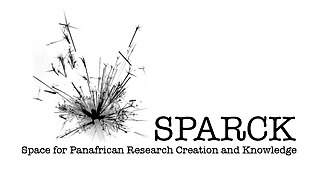
Space for Pan African Research Creation and Knowledge (SPARCK) is a multi-sited, multi-disciplinary project founded in 2008 in collaboration with The Africa Centre. It is structured around a series of residencies for artists from across Africa and the African diaspora working in numerous media and styles, a wide range of exhibitions, installations, performances, screenings, Internet link-ups, publications, round-table discussions and workshops. Its initiatives are directed at a diverse body of the public and actively engaged local communities.
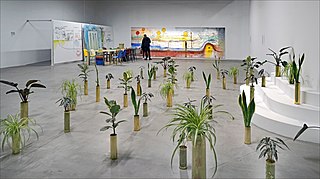
Sammy Baloji is a photographer from the Democratic Republic of the Congo. He works in Lubumbashi and Brussels, and held exhibitions in Amsterdam, Paris, Brussels, Bilbao, Cape Town and Bamako.

Renzo Martens is a Dutch artist who currently lives and works in Amsterdam and Kinshasa. Martens became known for his controversial work, including Episode III: Enjoy Poverty (2008), a documentary that suggests that the Congo market their poverty as a natural resource. In 2010 Renzo Martens initiated the art institute Human Activities that postulates a gentrification program on a palm oil plantation in the Congolese rainforest.
Cheik Ndoluvualu, called Cheik Ledy (1962–1997), was a Congolese artist. He was born in Kinto M’Vuila, Democratic Republic of Congo.
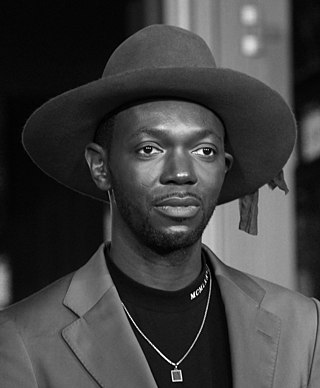
Baloji is a Belgian rapper, singer and film director of Congolese origin. Known as MC Balo in the hip hop group Starflam, he continued as solo artist starting 2006. The name Baloji in Swahili translates to "man of science". His film Omen was selected as the Belgian entry for Best International Feature Film at the 96th Academy Awards.
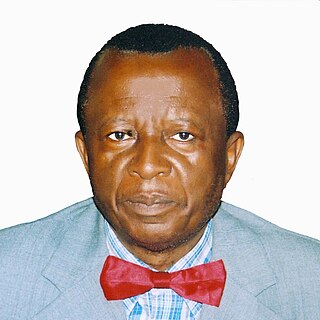
Constantin Kasongo Munganga is a politician and monetarist from the Democratic Republic of Congo. He holds a Ph.D. in economics. In 2011, he was elected MP for the constituency of Katanda Territory, in the Kasai-Oriental province. He is the former Chief Executive Officer of the Center for Expertise, Evaluation, and Certification of Precious and Semi-Precious Mineral Substances, CEEC in short. Television audiences nicknamed him "The Man With The Red Knot" because of his appearance on media. Since 1975, he has taught at the Institut Supérieur de Commerce of Kinshasa.
Alphonse Ilunga or Ilunga Dibwe Luakamanyabo is a Congolese politician.
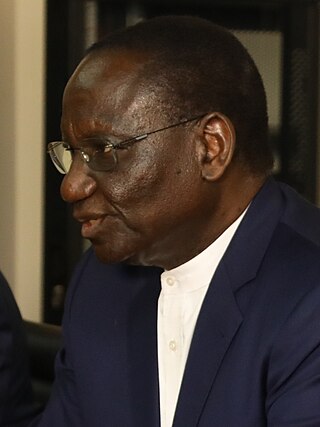
Sylvestre Ilunga Ilunkamba is a Congolese politician who was appointed as the Prime Minister of the Democratic Republic of the Congo in May 2019, formally establishing his government in August 2019. He has had a long political career going back to the 1970s, having held a number of ministerial cabinet posts, and was previously a professor at the University of Kinshasa since 1979. Ilunga has also been the secretary general of Congo's national railway company. He has a reputation as an experienced public servant and technocrat, as well as an ally of former President Joseph Kabila.
Jolie Ngemi is a dancer and performance artist from the Democratic Republic of the Congo.
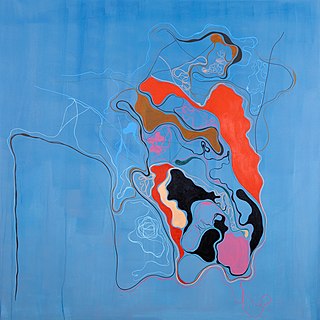
Moridja Kitenge Banza is a visual artist born in Kinshasa, Congo in 1980. He currently lives and works in Montreal, Quebec. His artworks employ a variety of media including drawing, painting, photography and installation.
Pilipili Mulongoy, also spelled Pili Pili Mulongoy, was an artist from the Democratic Republic of the Congo. He was raised in the Shaba Province of the Belgian Congo and worked as a plumber and building painter during his early adulthood. Following a drawing test at a studio in Élisabethville, Mulongoy honed his craft of painting nature scenes during the next several years. He later taught courses at the Académie des Beaux-Arts in Élisabethville. His work gained popularity in the Belgian Congo and especially Europe. Mulongoy's paintings were acquired by members of the Belgian royal family. Since his death in 2007, Mulongoy's paintings have been shown in several exhibitions in Africa, Europe, and North America.
References
- 1 2 3 4 Billie A. McTernan (December 2016). "Eddy Kamuanga Ilunga". Art Africa. No. 6. pp. 160–162.
- 1 2 3 4 "40 Under 40 Africa Artists: Eddy Kamuanga Ilunga]". Apollo: The International Art Magazine. September 28, 2020.
- ↑ Elena Martinique (July 18, 2016). "One of the Most Exciting Young African Artists Today, Eddy Kamuanga Ilunga at October Gallery". Kolumn Magazine.
- 1 2 3 4 5 6 7 8 9 10 11 Maya Jaggi (May 11, 2018). "Eddy Kamuanga Ilunga: understanding the present through the past". Financial Times .
- 1 2 3 Beverly Andrews (March 2018). "Anatsui, Ilunga outshine global stars". New African . No. 581. pp. 66–68.
- ↑ Anita Powell (April 10, 2018). "Congo's Talented Artists Struggle for Recognition". Voice of America.
- ↑ Amit Roy (September 24, 2021). "Summer of art diversity". Eastern Eye . No. 1628. p. 28.
- ↑ Rob Sharp (July 26, 2016). "How London Developed a Bullish Market for Contemporary African Art". Artsy .
- ↑ Vitshois Mwilambwe Bondo; Lauren Tate Baeza (Spring 2022). "Para-Institutional Kinshasa". Art Papers Magazine. Vol. 45, no. 3. p. 20.
- ↑ "Gender and Sexuality in African Futurism" by Jacqueline-Bethel Tchouta Mougoué, Feminist Africa. 2021, Vol. 2 Issue 2, page 2.
- ↑ "Eddy Kamuanga Ilunga's Paintings Depict Clash of Culture, Technology" by Andy Smith, Hi-Fructose magazine, March 3, 2017.
- ↑ Description for series 'Fragile Responsibility,' Southern Exposure, New Internationalist . November/December 2018, issue 516, page 47.
- 1 2 Amy Crawford (October 2022). "How Artist Eddy Kamuanga Ilunga Connects the Past and the Present". Smithsonian Magazine .
- ↑ Eddy Kamuanga Ilunga by Sammy Baloji, Sandrine Colard, Gerard Houghton, and Gabriela Salgado, foreword by Gus Casely-Hayford, Rizzoli, New York, October 2022.